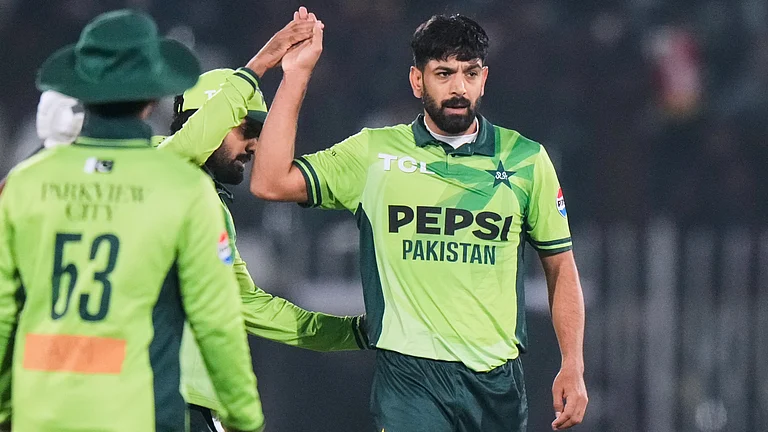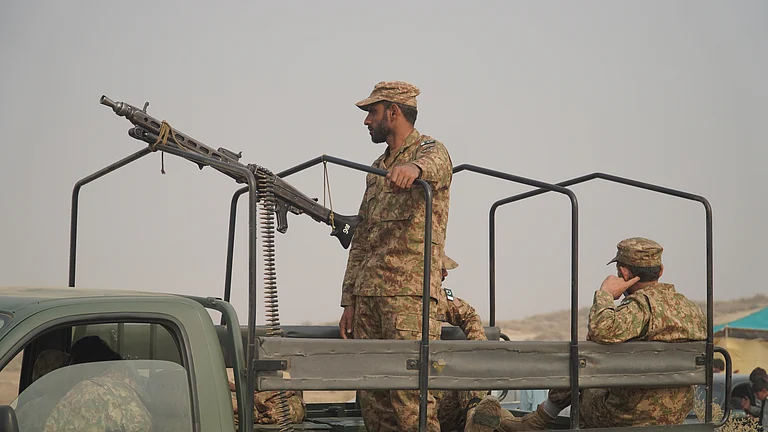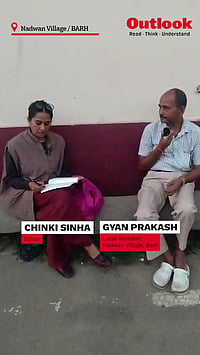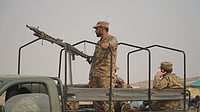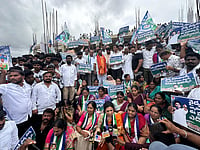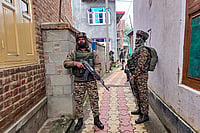The year 2008 has been one of the most challenging for both Afghanistan as well as India's presence here. For one, the July 7 bombing of the Indian embassy killed five of its staff, including two diplomats, shocking the international community as well as the Afghans. Worse, the security situation continues to deteriorate here amidst talk of negotiating with theTaliban, rearming the tribal militia and increasing the presence of international troops. Simultaneously, pressure has been mounted on Pakistan to deal with the sanctuaries of terrorism on its soil.
The Indian embassy or its staff didn't celebrate Diwali to commiserate with their colleagues who lost their lives. On that day, however, Indian ambassador to Afghanistan Jayant Prasad talked to AunohitaMojumdar. Excerpts:
The Indian government has identified the ISI as the perpetrator or the brains behind the July 7 blasts. What's your assessment about how far Pakistan was complicit in it?
It's not for me to speculate on the details of this event which is still being investigated by concerned agencies here. Suffice it for me to underline what is publicly known: that there was complicity and support, on the basis of which we were alerted before the attack. We had specific warnings on June 23 and July 1 on the imminence of a terrorist strike on the Indian mission. Which is why we were able to take precautionary measures. Unfortunately, we lost five of our colleagues, but the number of Afghans who died in the area contiguous to the embassy was 54 and over 100 seriously injured. But for the protective measures we were able to take, the embassy might have come crashing down that morning. That protective measure was based on specific intelligence inputs from friendly governments.
What impact did the traumatic event have on you and your feelings about being here?
I have thought a great deal about that event and I'm ready to talk freely about the collective impact of this tragic incident on the members of this mission. It had an impact in general, and specifically it had a different impact. The general impact was to make us aware of the fragility of the situation here in Afghanistan and the fragility of life itself.
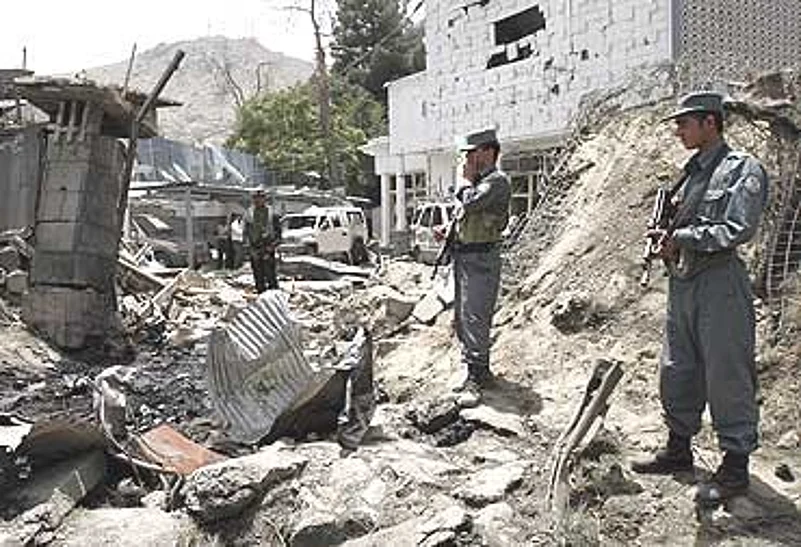
There was a more immediate impact caused by confronting the process of senseless killing of five of our dear colleagues. All of us were shaken initially because the event challenged our conventional assumptions about humanbehaviour. We came face to face with the human propensity for evil, death and destruction. But I'd say, paradoxically, the incident had an impact that was opposite to that intended by the perpetrator of the attack. They had sought to weaken our resolve and capacity to work in Afghanistan. Actually, the staff officers rallied around in a most admirable way. Not one official opted to return to India though the option was offered, since posts in the embassy and all consulates are volunteer posts in Afghanistan.
In fact one officer who had earlier sought to return to India for familyreasons came to me soon after the incident and asked for a week's leave to go toIndia. He wanted to explain to his wife that he had decided to stay on in Kabulbecause he felt impelled to do so by the sacrifice of his colleagues and that hewas staying for that reason and not staying away from his family for any otherreasons. Mrs Malti Rao and Mrs Sunita Mehta took the remains of their (respective) husbands, Venkat Rao and BrigMehta, back to India the same day in the evening in the special aircraft that the government had flown in for the purpose. They displayed exemplary courage and dignity. That too was inspiring for the officers and staff of the region.
The Indian government's reaction was that India remained fully committed to its assistance for rebuilding Afghanistan. One final element was the supportive reaction of the Afghan people and government. It provided us great psychological support.The governor of a province I had not met called to say India and Indians weresweating it out in Afghanistan for the development of this country and now that Indiandiplomats and official had been killed in a terrorist attack, the bond of sweathad become a bond of blood. And I think this was the sentiment that sustainedus.
After every such incident, most of the international community hunkersdown and indeed that very day most institutions were on high alert and mostinternational personnel had their movement restricted. Did you consider closing down theembassy at any point?
Well, everything was shattered in the mission and all the windows anddoors had broken. Luckily there was no major structural damage. The consularwing, which was our public dealing wing, had completely come down. We couldn’tuse the embassy building for two days, so we werefunctioning from the courtyard. But I must say that even the local people didnot hunker down. The foreign minister, Dr (Rangir Dadfar) Spanta, was on thespot 20 minutes after the incident when he was told by the security there couldbe a follow-on attack and he was told not to come. But he was still there. Thedefence minister General (Rahim)Wardak was there soon thereafter at BrigadierRavi Mehta’s residence together with the National Security Adviser. The Frenchambassador walked into the broken chancery soon after, showing great courage andcompletely disregarding his own security instructions. So I think there wastremendous solidarity. Members of parliament walked into the chancery thatevening while the special team from India was still there. The deputy speaker ofthe Wolesi jirga walked across. He is a neighbour. So it was not as if wehunkered down because Indians don’t hunker down and terrorists incidents arenot new to us so we have a normal way of dealing with the situation and I wouldsay that there is nothing special about the officers and men of the Indianmission and that this is the way any other Indian mission would have reacted.
How do you view the situation here today? The concept of buildingdemocracy in Afghanistan -- there are some things very different from the waywe would build democracy. You have a Parliament without political parties, and now the concept of rearming the militias because you cannot build a nationalarmy very fast. Is this what is needed here now? Does this need a change ofdirection?
We have a very well established of Indian diplomacy: we do not reallybelieve that a democratic model can be exported to another environment. It is sui generis to societal structure and historical traditions of every society.It is really for the Afghan people to sit and decide as to what constitutional makeup they should have and what kind of accommodations they should experiment with.After all, the Afghan Constitution was evolved through a process of the loyajirga and it is a fledgling democracy--it is very new. It has to develop theconventions and practices over a period of time. If you look at our ownexperiment -- the decentralisation to the third tier of government -- that came50 years after our Constitution. So you’ll have to give this experiment moretime.
There's a general assumption shared across the spectrum that the situation has become much worse than it was in previous years, that there has been progressive deterioration. Still, people have not lost hope. I feel there's a silver lining to the situation today. That there was an incremental deterioration in 2005, 2006 and 2007 and now you have a precipitate decline in security. There's a crisis now on our hands. But a crisis tends to concentrate the mind. There is a lot of churning, thinking and consultation and something good might come out of the process.
Can you define the special relationship between Afghanistan and India andhow this has changed?
There was a hiatus in the India-Afghanistan relationship which has been astrong relationship since independence. From the period 1979 onwards, we lostcontact with the Afghan people though there were government to governmentrelations. Then there was the period from 1992-96 when there was a gap -- themujahideen were fighting amongst themselves -- and then the Taliban came between1996 and 2001. So in the present context we are looking at end 2001 andbeginning 2002.
The relationship between India and Afghanistan goes back to cultural andcivilization ties but the essence of it today is to build a modern partnership.Our expectations of our involvement in Afghanistan are fairly simple andstraightforward. We want the unity, integrity, stability and prosperity ofAfghan people and Afghan society. There is absolutely a full consonance ofinterests between India and Afghanistan.
You mentioned the period between 1996 and 2001. At that time also,India had close relations in trying to help the Afghan people counter theTaliban...
Yes, indeed. We were one of the few voices which wanted a more active supportfor those who had the vision of a democratic and pluralist Afghanistan and wedid provide assistance to Commander Masood at that time and in that contextlinks had not been broken off completely. But we were not able to be present inall parts of Afghanistan as we were earlier and as we are today.
What is our view of the huge international presence here--both themilitary and non military?
The international presence here is based on successive annual UN SecurityCouncil and General Assembly resolutions and India is happy that countriesinvolved here are working within the UN mandate. The only supplement is thatthis process has to be much more Afghan-led. This realisation is now there inthe commitment to build the Afghan army and has to reflect itself in otherdomains.
Another supplement to the international engagement would be that aprerequisite for success in Afghanistan is greater regional cooperation.Afghanistan as a landlocked country has always done well when it has served as atrade hub between central and south Asia and between Iran and South Asia. And now,of course, given the importance of energy, Afghanistan should ideally become atrade energy and transportation hub between two different parts of Asia. Itwould be a duty of all Afghanistan’s neighbours to be helpful and supportivein achieving this objective.
How concerned are you about the stability of the region, especially whatwe have seen over the last one year?
Let me not mince words to say that we are happy that Afghanistan and Pakistan are now engaged in some kind of revival of Track-II diplomacy. With the return of democracy in Pakistan, we hope it will have a good impact in tackling problems. Currently, a mini jirga is taking place between Afghanistan and Pakistan.
These are positive signs in the sense that if the parameters under discussion are what were decided earlier, it might have a positive impact. The loya jirga itself in its major decision last year talked about not allowing sanctuaries and training centres for terrorists and that would be the key to resolving the problems being faced by Afghanistan.
Is there anything to indicate that Pakistan is changing its attitude?
This has to be tested against actual performance. Expression of intent, I'm afraid, is not going to be enough.h.
There are some who think the relationship between India and Pakistan is intricately linked to that between Afghanistan and Pakistan and that movement on the Indo-Pak relationship is necessary for movement on Afghan-Pak relations.
Absolutely not. India does not view its relationship with any third country predicated on, or in reaction to, or refraction of its relationship to any other country.
Improvement in the relationship between Afghanistan and Pakistan and Pakistan and India will have a positive resonance but that doesn't mean they are linked. We are conducting our own composite dialogue with Pakistan which came under a certain strain after the July 7 attack on the embassy. We are hoping that the conducive atmosphere for resuming our dialogue with Pakistan is in the process of being created. We have already engaged in a full dialogue with Pakistan across the spectrum for that reason.
The basic issue is we don't see how that (Indo-Pak relations) is related to the problem of dealing with insurgency in Afghanistan or how that's related to improvement in Pak-Afghan relations.
But Pakistan seems to think so.
Pakistan seems paranoid about our development activity here and we have, at different levels, tried to tell them about what we are doing here. Pakistan has a mission here and it must be reporting on what we are doing here. What we are doing is very transparent and open. We have modest-sized consulates overseeing development activity and we have a medium-sized embassy in Kabul. Most of my diplomatic colleagues here marvel at how we manage with so few people running a development assistanceprogramme, the envelope of which is over a billion dollars today.
What are the implications of the talks that the Afghan government is initiating with the Taliban?
Our view is that it is unexceptionable for all governments to talk to all alienated individuals and groups. We do that too. But we have to be circumspect about the circumstances in which we talk and with whom we talk. Evidently, you cannot talk with anyone outside the pale. For instance, terrorists who believe in settling political issues with violence. Or with those who do not accept democracy and political pluralism. Or do not believe in human rights and fundamental freedoms and those that don't operate within constitutional bounds. If you do, then it is to accept that you can fry snowballs.
How is the Indian assistance different from that of others?
Indian presence and Indian support are different from how other countriesapproach Afghanistan in many significant ways. We are present all overAfghanistan and we are in all major domains of activity: humanitarianassistance, infrastructure projects, small development projects with quickgestation and capacity building in government.
We came in with humanitarian assistance which meant, for example, setting up camps forputting the Jaipur limb on disabled people, providing food assistance and medicalservices. We set up five medical missions which still continue and we promised amillion tonnes of foodgrain assistance which we unfortunately could not shipacross to Afghanistan through Pakistan because of objections and then we decidedto convert it into high protein biscuits.
The second part of our program includes the three major infrastructureprojects -- the Nimroz project connecting Seistan province in Iran to theKandahar-Herat highway, the Pul-e-Khumri transmission line and the Chimtala substation which is part of a scheme we are working together with the World Bankand ADB to bring Uzbek electricity to Kabul which will be completed and handedover by end-November this year. The third big project in this sector is inthe Western province of Herat where we are building the 42 mw Salma dam on theHari Rud river.
The third element is something we introduced three years ago when Dr ManmohanSingh came here. He wanted us to think of inventive schemes where we had quickgestation projects, not executed by Indian agencies but bythe local provinces. And in the social sector, setting up clinics and schools, even smallirrigation works, electrification, micro hydel or putting in an array of solarcells for powering institutions. This is called the small development projectprogram. We had 50 such projects -- typically less than $1 million each -- in allparts of Afghanistan, conceived and executed by local and provincialgovernance. This has been a great success. The first part of this program isover. In fact, the projects are spread all over Afghanistan and this is thesecond major aspect of our assistance that, unlike other donors who have theirprovincial reconstruction teams (PRTs) in particular areas, or who haveconcentrated in certain areas, we are located in terms of development assistanceall over the entire territory of Afghanistan. We have projects in every part ofAfghanistan from the solar power of a teacher’s training institute inBadakshan in the Northeast to a cold storage for fresh fruit in Kandahar in theSouth. We have in the South West this unique road construction project in Nimrozwhich has been completed and handed over. In the heart of Afghanistan, which isKabul, we supplied Tata buses, we have set up the Sulabh shauchalaya (publicconveniences) which areextremely popular and the Pul e Khumri transmission line to bring electricity toKabul.
The fourth element of our aid, which I consider the most important, is torebuild the state structure in Afghanistan and here let me say that we have thebiggest state building program in Afghanistan compared to any other country andthese are the biggest programs that India has for any third country. From bothends, it is a first. We offer 500 placements in our institutions under the ITECprogram.
Another element is the 500 undergraduate and graduate scholarships that weare giving to Afghan nationals to study in India. Apart from this we havespecially conceived programs for special people. Right now, in Kabul, we have twoprograms -- one of which is being run by SEWA to train 1000 war widows and destitute andorphans. They are being trained in four different types of occupations so thatthey can stand on their own feet. Then the CII is executing another development program here to train 1000Afghan youngsters in different trades like masonry, plumbing, machining electricwork and women in industrial stitching and tailoring.
If these programs are successful then they can be replicated in other partsof Afghanistan. Without spreading our personnel all over Afghanistan, because we have donethese programmes smartly. The Afghan trainers in these programs have beentrained by us and they are the ones who are imparting training. We aredeveloping a local capacity for Afghans to train themselves. We have alsoconceived a system of capacity development within Afghan national institutions,especially the central ministries where we have some middle rank officials fromIndia on deputation here in a trilateral agreement in cooperation with UNDP.
Unlike consultants who are placed by other foreign governments in ministries,here we have made clear that our personnel are strictly there as mentors and guidesand for developing training modules for maximising the output of Afghan pubicservants. This has been a great success because there is a demand for moresuch mentors and guides to be brought from India.








